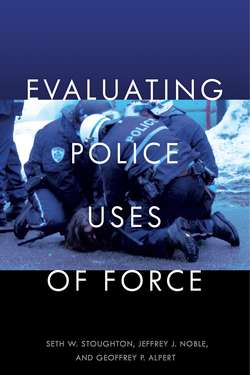Читать книгу Evaluating Police Uses of Force - Seth W. Stoughton - Страница 16
На сайте Литреса книга снята с продажи.
What Does the Constitutional Standard Regulate?
ОглавлениеThe Fourth Amendment regulates seizures.13 Thus, the Fourth Amendment only regulates the use of force to the extent that a use of force amounts to a seizure; a use of force that does not constitute a seizure is not constitutionally cognizable.
An individual is seized, the Court has held, when the circumstances are such that a reasonable person would not feel free to “disregard the police and go about his business.”14 The Court has held that this requires “an intentional acquisition of physical control.”15 The requisite acquisition of physical control can occur under two circumstances. First, when an individual submits to an officer’s “assertion of authority,” as when an officer initiates a traffic stop by activating their emergency lights and the target driver pulls over to the side of the road. Second, and more relevantly for purposes of this book, an officer acquires physical control by engaging in “mere grasping or [the] application of physical force.”16 Importantly, the nonphysical assertion of control constitutes a seizure only when the individual submits. In contrast, the physical assertion of control—that is, an officer’s initiation of physical contact to control a subject’s movement—constitutes a seizure regardless of whether the individual submits or resists.
There is a substantial overlap between seizures and uses of force, but the idiosyncrasies of constitutional law mean that they are not coextensive. Because an individual’s submission to a nonphysical assertion of control can constitute a seizure, an officer can effectively seize someone without using force. If, for example, an officer tells a pedestrian to stop and the pedestrian stops, that interaction is highly likely to be deemed a seizure—which may comply with or violate the Fourth Amendment—even though the officer’s verbal command did not involve the use of force as that term is generally understood.
At the same time, however, an officer can use physical force without that use of force being considered a seizure for constitutional purposes. If, for example, an officer fires their sidearm at a fleeing subject, but if the bullet misses and the subject continues running, there is neither submission to a show of authority nor physical contact. At most, there is an officer’s attempt to make physical contact, but an officer’s intentions alone are not sufficient to constitute a seizure for Fourth Amendment purposes. In that example, the Fourth Amendment simply is not a relevant standard that can be used to analyze an officer’s use of force.
To be constitutional, seizures—including seizures involving uses of force—must be justified both at their inception and throughout their duration. The question in use-of-force cases is whether the application of force (or the threat of force against an individual who has been seized by submission to a show of police authority) exceeds the scope of what the situation allows. An officer can be legally justified in seizing an individual—for example, stopping a vehicle after observing a traffic infraction—without necessarily being justified in the use of force. In such a circumstance, the use of force will offend the Fourth Amendment’s prohibition of unreasonable seizures even when the traffic stop itself did not.
In the remainder of this chapter, we will discuss how the Fourth Amendment standard is best understood in situations when it is applicable to an officer’s use of force.
